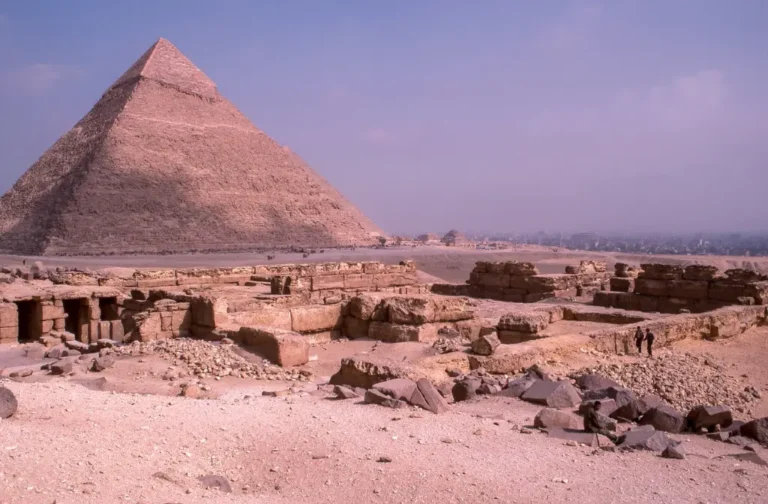Valley of the Kings Egypt: Ancient Tombs & Royal Secrets
Table of Contents
Step into the Hidden Tombs of Egypt’s Greatest Pharaohs – Unveiling the Valley of the Kings
Have you ever imagined walking in the footsteps of ancient pharaohs, surrounded by hidden tombs and royal secrets waiting to be uncovered? The Valley of the Kings in Egypt is one of the most mystical archaeological sites in the world, offering a glimpse into the life and death of Egyptian rulers from the New Kingdom era. With over 60 tombs, including that of Tutankhamun, this burial ground holds an unparalleled allure for history enthusiasts, travelers, and adventurers alike.
Nestled on the west bank of the Nile, near Luxor, the Valley of the Kings served as the final resting place for some of the most legendary rulers of Ancient Egypt. Unlike the pyramids, which were vulnerable to tomb raiders, these rock-cut tombs were hidden deep in the cliffs, protected by their secrecy. However, over time, many of them were still plundered, leaving behind only remnants of their once-glorious treasures. Yet, what remains is nothing short of extraordinary.
In this article, you’ll explore the rich history, mysterious discoveries, and travel tips to make your visit to the Valley of the Kings an unforgettable experience.
The Legacy of the Valley of the Kings
Why Was the Valley of the Kings Built?
During the New Kingdom (1550–1070 BCE), pharaohs sought more secure and concealed burial sites compared to the towering pyramids of their predecessors. The Valley of the Kings was chosen due to its remote, easily defensible location and its proximity to Thebes, the religious and political capital of Ancient Egypt.
- The shift from pyramids to hidden tombs was a response to rampant grave robbery.
- The Valley became the royal necropolis for some of the most powerful pharaohs of the 18th, 19th, and 20th dynasties.
- Pharaohs like Ramses II, Hatshepsut, and Tutankhamun were buried here in elaborately decorated tombs, filled with treasures meant to accompany them into the afterlife.
Unveiling the Most Famous Tombs
The Tomb of Tutankhamun (KV62) – The Most Iconic Discovery
- In 1922, British archaeologist Howard Carter unearthed the tomb of Tutankhamun, one of the few royal tombs discovered intact.
- The tomb contained over 5,000 artifacts, including the famed golden death mask.
- Some believe the Curse of the Pharaohs led to mysterious deaths among Carter’s team.
- Today, visitors can view a replica of the tomb in Luxor, with the original artifacts displayed at the Grand Egyptian Museum in Giza.
The Tomb of Seti I (KV17) – The Longest and Most Detailed Tomb
- Built for Seti I, one of the most powerful rulers of the 19th Dynasty.
- Features intricately carved hieroglyphs and some of the best-preserved wall paintings in the Valley.
- Spans nearly 137 meters in length, with multiple corridors and chambers.
The Tomb of Ramses VI (KV9) – A Celestial Journey
- Known for its spectacular astronomical depictions from the Book of the Dead.
- Its well-preserved state makes it a must-see for visitors interested in ancient Egyptian beliefs about the afterlife.
The Hidden Mysteries of the Valley
Unsolved Secrets and Recent Discoveries
Despite over 200 years of excavation, the Valley of the Kings still holds mysteries:
- New tombs are continuously being discovered, with archaeologists using LiDAR technology to scan the underground terrain.
- Some believe the tomb of Queen Nefertiti might still be hidden within the Valley.
- Hidden chambers in Tutankhamun’s tomb could lead to even more royal burials.
The Curse of the Pharaohs – Fact or Fiction?
- Many believe the curse struck down those who entered Tutankhamun’s tomb.
- Scientists suggest mold spores and bacteria in the tombs, rather than supernatural forces, might be responsible for illnesses.
- Hollywood has sensationalized the legend, keeping it alive in modern pop culture.
Planning Your Visit: A Traveler’s Guide
How to Get to the Valley of the Kings
- Located on the west bank of the Nile, near Luxor.
- Easily accessible by boat, taxi, or organized tour.
- Entry fees vary, and tickets for premium tombs (like Tutankhamun’s) require additional payment.
Must-See Attractions Beyond the Tombs
The Temple of Hatshepsut
- A stunning mortuary temple built for Egypt’s most famous female pharaoh.
- Known for its unique terraced architecture.
The Colossi of Memnon
- Two massive statues of Pharaoh Amenhotep III that have stood for over 3,400 years.
- Believed to have mystical properties due to the sounds they emitted at sunrise.
The Ramesseum – Ramses II’s Grand Mortuary Temple
- Features some of the most impressive reliefs depicting the reign of Ramses the Great.
Travel Tips for an Unforgettable Experience
- Visit between October and April for cooler temperatures.
- Bring plenty of water, sunscreen, and comfortable shoes.
- Photography rules vary; flash photography is generally prohibited inside the tombs.
- Consider hiring a licensed guide to enhance your experience with expert insights.
The Valley’s Impact on Egyptian History and Tourism
The Valley of the Kings in Popular Culture
- Featured in films like The Mummy and documentaries on the Discovery Channel.
- Inspired books, including Agatha Christie’s Death on the Nile.
Conservation Efforts and Future Challenges
- Climate change and increased tourism pose threats to tomb preservation.
- Efforts by UNESCO and Egyptian authorities focus on restoring and protecting tomb interiors.
Conclusion: The Eternal Allure of the Valley of the Kings
The Valley of the Kings is not just a historical site—it’s a window into the world of pharaohs, gods, and ancient beliefs. Whether you’re drawn by its mystery, history, or grandeur, this destination offers an experience like no other. Don’t miss the chance to explore its secrets firsthand and step into the past where Egypt’s greatest rulers once walked.
FAQs
Q: Can you enter all the tombs?
A: Only a select number are open at a given time for preservation purposes.
Q: Is it worth visiting with a tour guide?
A: Yes, guides provide historical insights and enrich the experience.
Q: What is the best time to visit?
A: The ideal time is October to April to avoid extreme summer heat.
Q: Are there still undiscovered tombs?
A: Yes, archaeologists believe more royal tombs may still be buried beneath the Valley.






